PIM kinases as therapeutic targets against advanced melanoma
- PMID: 27448973
- PMCID: PMC5342389
- DOI: 10.18632/oncotarget.10703
PIM kinases as therapeutic targets against advanced melanoma
Abstract
Therapeutic strategies for the treatment of metastatic melanoma show encouraging results in the clinic; however, not all patients respond equally and tumor resistance still poses a challenge. To identify novel therapeutic targets for melanoma, we screened a panel of structurally diverse organometallic inhibitors against human-derived normal and melanoma cells. We observed that a compound that targets PIM kinases (a family of Ser/Thr kinases) preferentially inhibited melanoma cell proliferation, invasion, and viability in adherent and three-dimensional (3D) melanoma models. Assessment of tumor tissue from melanoma patients showed that PIM kinases are expressed in pre- and post-treatment tumors, suggesting PIM kinases as promising targets in the clinic. Using knockdown studies, we showed that PIM1 contributes to melanoma cell proliferation and tumor growth in vivo; however, the presence of PIM2 and PIM3 could also influence the outcome. The inhibition of all PIM isoforms using SGI-1776 (a clinically-available PIM inhibitor) reduced melanoma proliferation and survival in preclinical models of melanoma. This was potentiated in the presence of the BRAF inhibitor PLX4720 and in the presence of PI3K inhibitors. Our findings suggest that PIM inhibitors provide promising additions to the targeted therapies available to melanoma patients.
Keywords: PIM kinases; SGI-1776; melanoma; organometallics; therapy.
Conflict of interest statement
The authors declare no conflicts of interest.
Figures
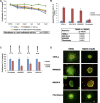
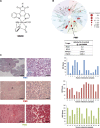
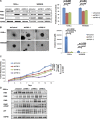

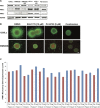
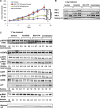

Similar articles
-
Mechanisms of cytotoxicity to Pim kinase inhibitor, SGI-1776, in acute myeloid leukemia.Blood. 2011 Jul 21;118(3):693-702. doi: 10.1182/blood-2010-12-323022. Epub 2011 May 31. Blood. 2011. PMID: 21628411 Free PMC article.
-
Transcription and translation are primary targets of Pim kinase inhibitor SGI-1776 in mantle cell lymphoma.Blood. 2012 Oct 25;120(17):3491-500. doi: 10.1182/blood-2012-02-412643. Epub 2012 Sep 6. Blood. 2012. PMID: 22955922 Free PMC article.
-
The PIM family of oncoproteins: small kinases with huge implications in myeloid leukemogenesis and as therapeutic targets.Oncotarget. 2014 Sep 30;5(18):8503-14. doi: 10.18632/oncotarget.2330. Oncotarget. 2014. PMID: 25238262 Free PMC article.
-
PIM kinases: an overview in tumors and recent advances in pancreatic cancer.Future Oncol. 2014 Apr;10(5):865-76. doi: 10.2217/fon.13.229. Future Oncol. 2014. PMID: 24799066 Review.
-
PIM serine/threonine kinases in the pathogenesis and therapy of hematologic malignancies and solid cancers.Haematologica. 2010 Jun;95(6):1004-15. doi: 10.3324/haematol.2009.017079. Epub 2010 Feb 9. Haematologica. 2010. PMID: 20145274 Free PMC article. Review.
Cited by
-
BRAF inhibition curtails IFN-gamma-inducible PD-L1 expression and upregulates the immunoregulatory protein galectin-1 in melanoma cells.Mol Oncol. 2020 Aug;14(8):1817-1832. doi: 10.1002/1878-0261.12695. Epub 2020 May 19. Mol Oncol. 2020. PMID: 32330348 Free PMC article.
-
BRAF Targeting Sensitizes Resistant Melanoma to Cytotoxic T Cells.Clin Cancer Res. 2019 May 1;25(9):2783-2794. doi: 10.1158/1078-0432.CCR-18-2725. Epub 2019 Feb 14. Clin Cancer Res. 2019. PMID: 30765391 Free PMC article.
-
Polyamine and EIF5A hypusination downstream of c-Myc confers targeted therapy resistance in BRAF mutant melanoma.Mol Cancer. 2024 Jul 4;23(1):136. doi: 10.1186/s12943-024-02031-w. Mol Cancer. 2024. PMID: 38965534 Free PMC article.
-
High-content screen using zebrafish (Danio rerio) embryos identifies a novel kinase activator and inhibitor.Bioorg Med Chem Lett. 2017 May 1;27(9):2029-2037. doi: 10.1016/j.bmcl.2017.02.068. Epub 2017 Feb 28. Bioorg Med Chem Lett. 2017. PMID: 28320616 Free PMC article.
-
Intersecting transcriptomic profiling technologies and long non-coding RNA function in lung adenocarcinoma: discovery, mechanisms, and therapeutic applications.Oncotarget. 2017 Jun 9;8(46):81538-81557. doi: 10.18632/oncotarget.18432. eCollection 2017 Oct 6. Oncotarget. 2017. PMID: 29113413 Free PMC article. Review.
References
-
- Villanueva J, Infante JR, Krepler C, Reyes-Uribe P, Samanta M, Chen HY, Li B, Swoboda RK, Wilson M, Vultur A, Fukunaba-Kalabis M, Wubbenhorst B, Chen TY, et al. Concurrent MEK2 Mutation and BRAF Amplification Confer Resistance to BRAF and MEK Inhibitors in Melanoma. Cell Rep. 2013;4:1090–1099. - PMC - PubMed
-
- Villanueva J, Vultur A, Lee JT, Somasundaram R, Fukunaga-Kalabis M, Cipolla AK, Wubbenhorst B, Xu X, Gimotty PA, Kee D, Santiago-Walker AE, Letrero R, D'Andrea K, et al. Acquired Resistance to BRAF Inhibitors Mediated by a RAF Kinase Switch in Melanoma Can Be Overcome by Cotargeting MEK and IGF-1R/PI3K. Cancer Cell. 2010;18:683–695. - PMC - PubMed
MeSH terms
Substances
Grants and funding
LinkOut - more resources
Full Text Sources
Other Literature Sources
Medical
Research Materials

